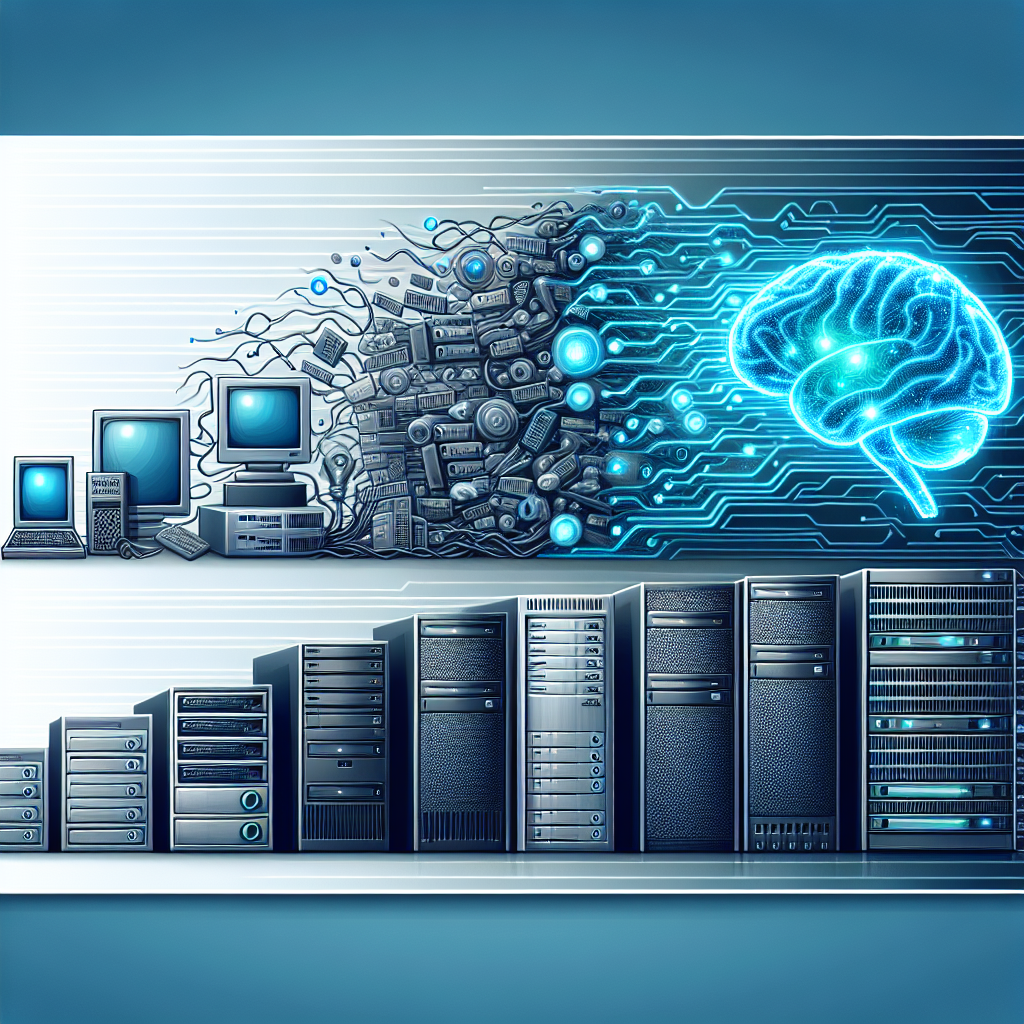Artificial intelligence (AI) has come a long way since its inception, and the evolution of AI deployment technologies has played a crucial role in its advancement. From simple rule-based systems to complex neural networks, AI technologies have undergone significant transformations over the years. In this article, we will explore the evolution of AI deployment technologies and how they have revolutionized various industries.
1. Rule-based systems: The earliest AI systems were rule-based systems that relied on a set of predefined rules to make decisions. These systems were limited in their capabilities and could only perform specific tasks for which they were programmed. While rule-based systems were a significant step forward in AI development, they lacked the ability to learn and adapt to new situations.
2. Machine learning: Machine learning marked a significant shift in AI deployment technologies. Instead of relying on predefined rules, machine learning algorithms could learn from data and improve their performance over time. This led to the development of more sophisticated AI systems that could perform complex tasks such as image recognition, natural language processing, and autonomous driving.
3. Deep learning: Deep learning is a subset of machine learning that uses artificial neural networks to simulate the human brain’s decision-making process. Deep learning algorithms have revolutionized AI deployment technologies by enabling the development of systems that can learn from massive amounts of data and make highly accurate predictions. This technology has been instrumental in the development of AI applications in areas such as healthcare, finance, and cybersecurity.
4. Cloud computing: The advent of cloud computing has also played a significant role in the evolution of AI deployment technologies. Cloud services provide the computational power and storage needed to train and deploy AI models at scale. This has made AI more accessible to businesses of all sizes, enabling them to leverage AI technologies to improve their operations and services.
5. Edge computing: Edge computing is another important development in AI deployment technologies. Edge computing allows AI models to run on devices at the edge of the network, such as smartphones, IoT devices, and autonomous vehicles. This enables real-time processing of data and reduces latency, making AI applications more responsive and efficient.
6. Transfer learning: Transfer learning is a technique that allows AI models to leverage knowledge gained from one task to improve performance on another task. This has significantly reduced the time and resources required to train AI models, making it easier for businesses to deploy AI technologies in their operations.
7. AutoML: AutoML, or automated machine learning, is a technology that automates the process of building and deploying AI models. AutoML platforms enable businesses to quickly create and deploy AI applications without the need for extensive expertise in machine learning. This has democratized AI deployment, allowing businesses of all sizes to harness the power of AI.
8. Explainable AI: Explainable AI is a critical development in AI deployment technologies that aims to make AI systems more transparent and accountable. Explainable AI algorithms provide insights into how AI models make decisions, enabling users to understand and trust the results produced by these systems.
The evolution of AI deployment technologies has transformed the way businesses operate, enabling them to automate processes, improve decision-making, and deliver better services to customers. As AI technologies continue to evolve, we can expect to see even more advanced AI deployment technologies that will further revolutionize various industries.
FAQs:
1. What industries are benefiting the most from AI deployment technologies?
AI deployment technologies have had a significant impact on a wide range of industries, including healthcare, finance, retail, manufacturing, and transportation. In healthcare, AI technologies are being used to improve diagnosis and treatment outcomes, while in finance, AI is being used to detect fraud and optimize investment strategies. In retail, AI technologies are being used to personalize customer experiences and optimize inventory management. In manufacturing, AI technologies are being used to improve production efficiency and quality control. In transportation, AI technologies are being used to optimize route planning and reduce accidents.
2. How can businesses leverage AI deployment technologies to improve their operations?
Businesses can leverage AI deployment technologies in various ways to improve their operations. For example, they can use AI-powered chatbots to provide customer support, AI algorithms to optimize supply chain management, and AI systems to automate repetitive tasks. By deploying AI technologies, businesses can reduce costs, increase productivity, and deliver better services to their customers.
3. What are some challenges associated with deploying AI technologies?
While AI deployment technologies offer numerous benefits, they also present several challenges. One of the main challenges is the lack of data quality and quantity required to train AI models effectively. Another challenge is the need for specialized expertise in machine learning and data science to develop and deploy AI applications. Additionally, ethical and regulatory concerns around AI technologies, such as bias and privacy issues, must also be addressed to ensure the responsible use of AI technologies.
In conclusion, the evolution of AI deployment technologies has revolutionized various industries, enabling businesses to automate processes, improve decision-making, and deliver better services to customers. From rule-based systems to deep learning algorithms, AI technologies have come a long way, and we can expect to see even more advanced AI deployment technologies in the future. By leveraging AI technologies, businesses can gain a competitive edge and drive innovation in their operations.

